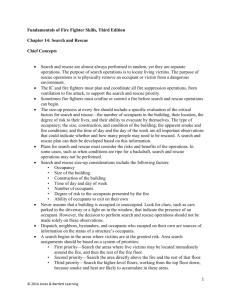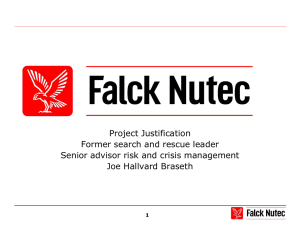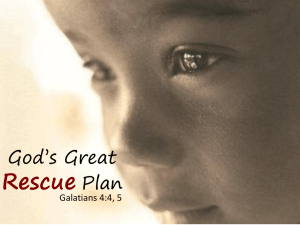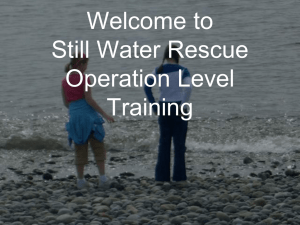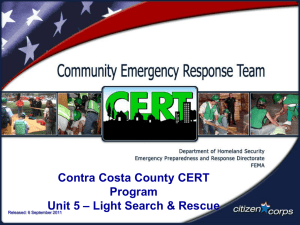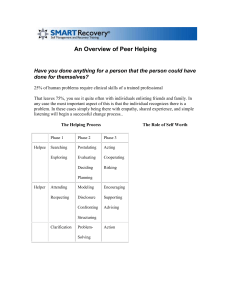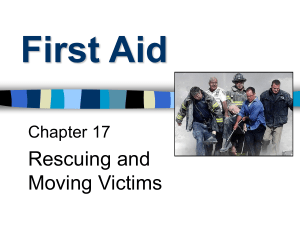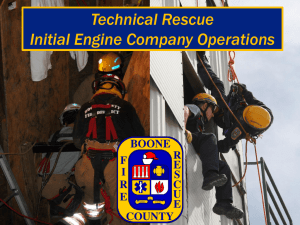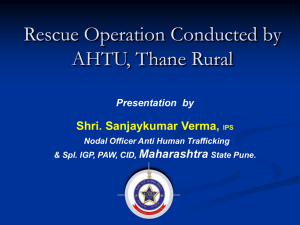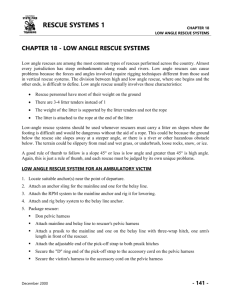Search & Rescue
advertisement
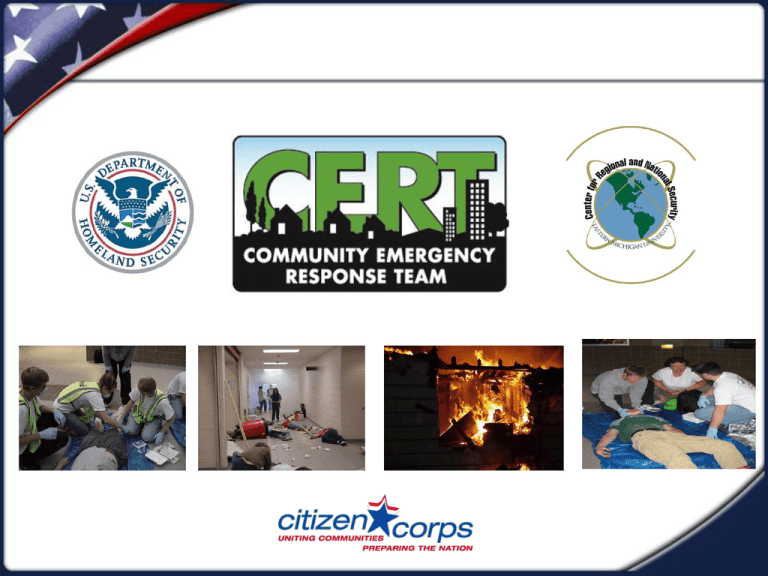
SEARCH & RESCUE Search and Rescue Operations Sizeup Search involves: Locating victims. Documenting location. Rescue involves procedures and methods to extricate victims Decision To Attempt Rescue Risk involved to the rescuer Greatest good for greatest number of people Goals of Search and Rescue Rescue greatest number in shortest amount of time Rescue lightly trapped victims first Effective Search and Rescue Effective sizeup Rescuer safety Victims safety Unit Objectives Identify sizeup requirements for potential search and rescue situations. Describe the most common techniques for search a structure. Use safe techniques for debris removal and victim extrication. Describe ways to protect rescuers during search and rescue. CERT Search and Rescue Sizeup 1. 2. 3. 4. 5. 6. 7. 8. 9. Gather Facts Assess Damage Consider Probabilities Assess Your Situation Establish Priorities Make Decisions Develop Plans of Action Take Action Evaluate Progress Step 1: Gather Facts Consider the: Time of event and day of week. Type of structure. Construction type. Weather. Hazards. Gather facts accurately. Step 2: Assess and Communicate Damage CERT mission changes if: Damage is light. Damage is moderate. Damage is heavy. If there is doubt about structure condition-Leave the area around the structure immediately! Consider structure type and age. Never enter a structure with heavy damage! Search and Rescue Slight Damage Search and Rescue Moderate Damage Search and Rescue Heavy Damage Search and Rescue If in doubt about whether to classify a building as having moderate or heavy damage, CERT members should choose the more serious level of damage—or heavy damage. Search and Rescue sizeup Personnel Tools Equipment Safety Considerations Make rescuer safety your primary concern. Use a buddy system. Be alert for hazards. Use safety equipment. Rotate teams. Teamwork=Success Conducting Search Operations Inspect area by: 1. Employing search techniques based on size up. 2. Locating potential victims. Conducting Search Operations Individual Voids Effective Search Methodology Indicates rescuer location Prevents duplication of effort Search Methods 1. Call out to victims. 2. Use systematic search pattern. 3. Stop frequently to listen for sounds of trapped victims. 4. Triangulate. 5. Mark searched areas to document results. 6. Report results. Conducting Search Operations Conducting Rescue Operations Primary Functions: Creating safe rescue environment Lift objects out of the way. Use tools to move objects. Remove debris. Triaging or stabilizing victims Removing victims Creating a Safe Environment Goals: Maintain rescuer safety. Triage in lightly and moderately damaged buildings. Evacuate victims quickly from moderately damaged buildings-minimize injury. Precautions to Minimize Risk Keep a safe environment: Know your limitations Follow safety procedures. Remove debris by: Leveraging. Cribbing. • Remember when leveraging a heavy object to remove a victim stabilize the object with cribbing as you go. Removing Victims Types of victim removal include: Self-removal or assist. Lifts and drags. If you suspect a possible spinal injury KEEP THE SPINE IN A STRAIGHT LINE. Allow victims to extricate themselves when possible. Extrication Method Depends upon: General stability of immediate environment. Number of rescuers available. Strength and ability of rescuers. Condition of victim.

